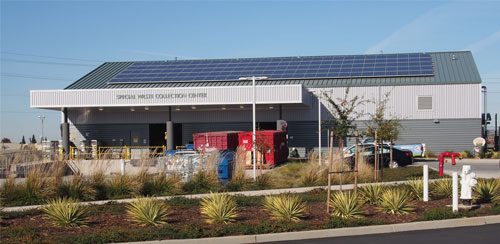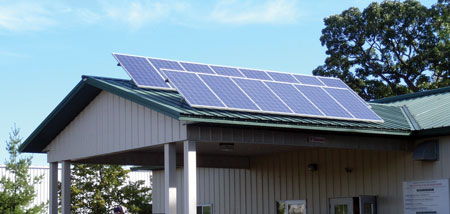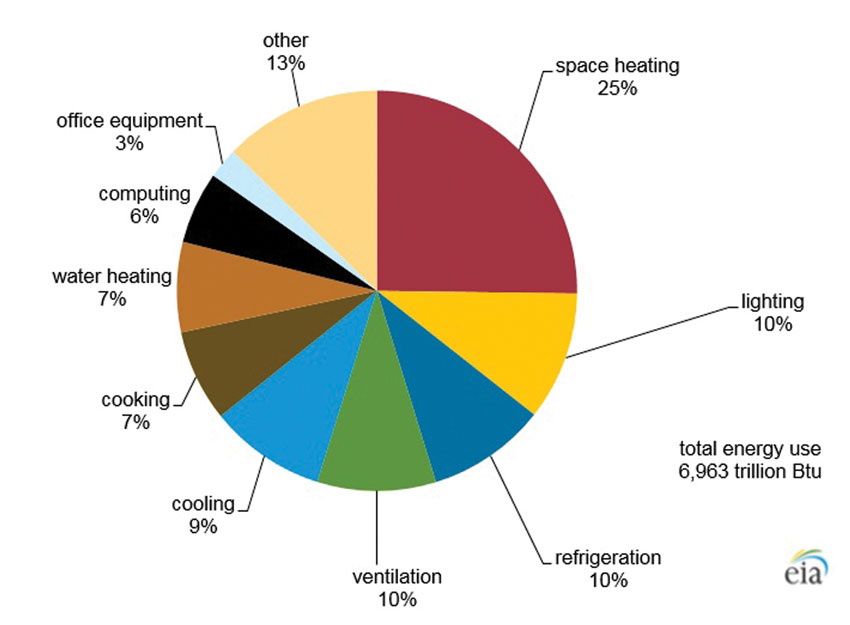While Zero Waste for HHW is likely far down the road, Net-Zero energy buildings are here now.
By David Nightingale, CHMM, S.C.
The U.S. EPA makes it clear that there is no universally accepted definition for the term Zero Waste.1 The U.S. Conference of Mayors adopts a rambling legislative-style definition that incorporates and extends the typical solid waste hierarchy encompassing reduce, recycle, and disposal by including extended producer responsibility and product redesign as the first priority. Zero Waste International Alliance’s definition has been adopted by some jurisdictions and they say that Zero Waste means: “The conservation of all resources by means of responsible production, consumption, reuse and recovery of products, packaging and materials without burning and with no discharges to land, water or air that threaten the environment or human health.”2
SWANA defines Zero Waste in a more limited way that emphasizes solid waste management’s role, that is “efforts to reduce Solid Waste generation waste to nothing, or as close to nothing as possible, by minimizing excess consumption and maximizing the recovery of Solid Wastes through Recycling and Composting.”3 Some organizations’ concept of Zero Waste include a call for a whole system approach or closed-loop systems of production or a goal to guide people in changing their lifestyles and practices to emulate natural cycles.
A common element in many Zero Waste initiatives is the systematic reduction or elimination of toxicity of waste and products with toxic components. This directly connects to why many communities have implemented HHW and small business hazardous waste collection programs.
At the present, during this COVID-19 time, many HHW collection programs are reporting increased and record levels of HHW customer participation. Apparently, householders who are home more are attending to cleaning out their unwanted toxic materials from their home environments. It will be interesting to see if this trend continues as an enduring behavior change beyond the COVID-19 health crisis or not.
HHW Job Security?
HHW professionals used to talk about possible job security issues as hazardous materials are eliminated from commerce or in closed-loop systems, as the realization of a Zero Waste vision would require. This would mean that the need for HHW education and collection programs might dry up in the foreseeable future. Unfortunately, we are still far from that reality. The Zero Waste vision of eliminating toxic substances in commerce and in our homes is not very close.
While achieving Zero Waste is a stretch goal for any community, including the elimination of HHW, Net-Zero Energy is within reach, as demonstrated by some progressive HHW facilities.
Net-Zero Energy Buildings for HHW?
A Net-Zero Energy building is one where the energy it makes onsite is at least equal to the energy it uses annually. Net energy includes the use of electricity and other fuels such as natural gas and propane.
All fuel types used by buildings can be converted into an equivalent amount of British Thermal Units, commonly referred to as a BTUs. The amount of energy used by a building for all fuel types can be calculated on a square foot basis. This is called the energy intensity of the building and goes by the metric Energy Use Intensity or EUI. EUI combines all the energy sources used annually by the building, electricity, gas, oil, etc., as BTUs, and divides the BTUs by the square feet floor area of the building. EUI is normally expressed in thousands of BTUs per year per square foot, kBTU/sq.ft-yr.4 So the lower the EUI, the closer to Net-Zero Energy your building will be.
Moving towards a Net-Zero Energy building is often accomplished through methods including energy conserving building systems, natural lighting supplemented by efficient LED lights and controls, high-efficiency heating and cooling systems, energy efficient equipment and appliances, combined with photovoltaic (PV) electricity-generating panels.
One example of a Net-Zero Energy HHW building is City of Elk Grove’s Special Waste Collection Center (see Figure 1). It produces more energy from its large PV array than all sources of energy it uses in a year. So it has a negative EUI. Chisago County, MN has a more modest PV array which offsets part of its annual energy needs (see Figure 2).


Even if you cannot afford a large PV array to get to Net-Zero Energy during construction, you can orient and design your facility for future installation of a smaller PV array and use the energy conservation and other energy saving building and operating techniques to reduce your energy demand. Of course, your building site needs to have good solar exposure to leverage any PV investment. If your building is located in a forest with shade all year long, you will not reap the advantages of an alternative site with better solar exposure. In any event, you can track your EUI over time to measure how your operations and building infrastructure perform from year-to-year.
Commercial building energy use has been decreasing in the past decades. In 1979, a national survey of commercial buildings found the average annual EUI at more than 115 kBTU/sq.ft. In 2012 a similar national survey found the average commercial building used about 80 kBTU/sq.ft. annually, a decrease of more than 30 percent.5 Almost two-thirds of energy used in commercial buildings is electricity and natural gas. The next most prevalent energy sources are district heating and fuel oil, which combine for less than 10 percent.6 Some pioneering HHW facilities were being built in the early 1980s. Those buildings may be due for possible remodeling and benefit from a focus on increased energy efficiency and study to see if a PV array may be feasible.
Different types of building uses result in different EUIs. Office buildings have an EUI of around 80 whereas warehouse and shipping buildings have typical EUIs under 50. HHW buildings often have mixed uses, which include large areas for storage/warehouse, but also often include offices, waste processing, educational and other types of uses.7

Source: U.S. Energy Information Administration, 2012 Commercial Buildings Energy Consumption Survey.
As Figure 3 from the U.S. Energy Information Administration shows, space heating, lighting, refrigeration and ventilation are the largest end uses in commercial buildings followed closely by cooling at 9 percent. Refrigeration is not used in HHW buildings, but space heating, lighting, ventilation and cooling are commonly used. To reduce the EUI in your HHW building, focus on the largest energy uses for opportunities to get closer or achieve Net-Zero Energy. Many local electrical and gas utilities provide free or low cost energy audits to assess where your largest opportunities for cost-effective energy conservation exist. Working with local engineering and architecture firms that focus on energy efficiency and alternative energy can also help identify opportunities for reducing your energy footprint.
Wrap-up
Zero Waste is a stretch goal that will take many years to realize significant reductions in the productions and sales of products that require management at end-of-life by HHW programs. Therefore, it appears that HHW professionals are unlikely to be working themselves out of a job in the near term. On the other hand, the goal of achieving a Net-Zero Energy HHW building is feasible in some instances and reducing energy consumption is a goal that can be pursued by all to reduce environmental and fiscal impacts of HHW programs everywhere. | WA
David Nightingale, CHMM, S.C., is Principal at Special Waste Associates (Olympia, WA), a company that assists communities in developing or improving HHW and VSQG collection infrastructure and operations. They have visited more than 145 operating HHW collection facilities in North America. As a specialty consulting firm, Special Waste Associates works directly for program sponsors providing independent design review for new or upgrading facilities—from concept through final drawings to create safer, more efficient and cost-effective collection infrastructures. Special Waste Associates also published the book, HHW Collection Facility Design Guide.
Notes
www.epa.gov/transforming-waste-tool/how-communities-have-defined-zero-waste
Ibid.
Ibid.
Energy practitioners usually just shorten this to kBTU/sq.ft. as it is widely understood that this is an annual value.
www.eia.gov/consumption/commercial/reports/2012/energyusage/index.php Figure 5
Ibid, Figure 2.
Ibid, Figure 4.
